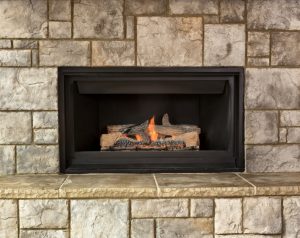
Your fireplace and chimney do more than just serve as a focal point in whatever room they’re in. They also provide warmth during the winter season when you get a nice blaze going. Winter isn’t the only time of year when you need to take care of this system–and yes your fireplace and chimney really are considered a system.
It may not have moving parts but it has plenty of different parts to consider and keep track of. That is why we’ve provided a quick list of some of the bigger parts you should know a bit more about so that you know better how to care for your fireplace and chimney. The better your know this system, the easier it will be to determine if and when it needs chimney or fireplace repair in St. Paul, MN.
3 Parts of Your Fireplace & Chimney You Should Know
Make sure you know about these parts of your fireplace and chimney so you know how to recognize when something is wrong with your system.
Your chimney flue
Your chimney isn’t just a brick and mortar structure. Within the brickwork is your chimney flue and it is vital to the functionality of your overall fireplace and chimney. The flue is a metal tube that sits within your chimney and siphons gas and soot out of the house. The flue is highly important because it not only serves as the pathway for those fumes to exit your home but also protects the brickwork of your chimney from being harmed by those gases and debris.
A bad chimney flue can increase the risk of a house fire, backdrafts, and even leaks in your home.
The firebox
The firebox is where the “magic” happens for your fireplace. The firebox is the heart of the fireplace where you build your wood fire or burn a gas-powered fire. The firebox has to be capable of handling high temperatures in order to prevent house fires. If you have a wood-burning fire, you also need to make sure to have a firebox that has a connected ash dump so that ash doesn’t pile up in the firebox itself.
Your damper
Another essential part of your chimney system is the damper. This is the part that allows your fireplace to vent gases and fumes up the chimney and out of the house when it is open. Or it prevents backdrafts and moisture from entering the house when it is closed. A working damper can be a layer of protection to your home while a malfunctioning one can put you in serious danger.
Warning Signs Of Trouble In Your Fireplace System
Now that you know some of the important parts of this system that you should recognize, you’ll need to know what some of the warning signs are of trouble in this system. Warning signs can include:
- Creosote build-up in the fireplace and chimney that you can see or smell.
- Rust or build-up on your chimney damper
- Trouble opening or closing your damper
- Leaking from the chimney
If you need any assistance with your fireplace or chimney, schedule a chimney inspection today in order to see if you need service from a 2nd Generation Chimneys, Inc.
